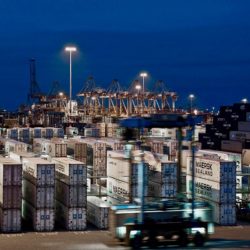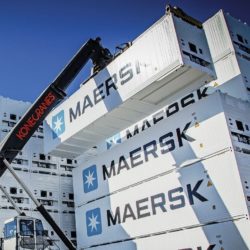Where does blockchain go from here?

Implementation of blockchain in supply chain seems to have reached an impasse. What’s next for the technology born from the world of cryptocurrency? Since it made the leap about six years ago from the then-obscure world of cryptocurrencies to business applications like supply chain, the story arc of blockchain has been compelling. But recent events are leaving observers asking if the final chapters are now being written.
By Ralf W. Seifert and Richard Markoff
To many, blockchain has offered the promise of revolutionizing supply chains by removing third parties, bringing complete transparency to transactions, and offering auditable tracking of the provenance of goods. To others, it has seemed more like a solution in search of a problem.
From promise to demise
Blockchain made its first appearance in the Gartner Hype Cycle in 2016. In what now may seem like foreshadowing, it bypassed the first stage of ‘innovation trigger’, landing immediately in ‘the peak of inflated expectations’. In the two years that followed, fueled by solutions developed by startups and consulting companies, there was a dizzying array of pilots and use cases.
For supply chain, the flurry of activity generally centered on two core activities. The first was recording a ledger of transactions to provide complete traceability for goods. Brought to prominence by a near-apocryphal story of Walmart demonstrating the power of blockchain in recording the provenance of mangoes, it culminated in 2018 with the announcement in the Wall Street Journal that Walmart, in collaboration with IBM’s Hyperledger blockchain solution, would require all vendors to use Hyperledger to provide traceability data under the Food Trust initiative. Global food giants like Nestlé, Tyson and Dole were on board, and it seemed like a pivotal moment where blockchain would transition from a pilot darling to a scaled technology.
Since the initial splash of the launch announcement, however, the project has gone silent. Updates on deployment and new partners has proven difficult to find. On the IBM Hyperledger side, in early 2021 the company announced that it was closing the marketing division of the business unit, with an internal source saying, “Expectations for enterprise blockchain were too high.” Blockchain as a solution to tracking and reporting provenance seems to be at an impasse.
Smart contracts
The second core activity that received attention from blockchain innovators was an application called smart contracts. The underlying concept is that movements that are recorded on a blockchain can trigger automatic transactions without human intervention to slow things down. This would seem to be a perfect fit with international freight shipments, which are infamous for heavy documentation demands in order to satisfy international letters of credit, customs filings, and changes of ownership. Insofar as there are many steps to track, each step is properly recorded and available to a blockchain. It has obvious inefficiencies; perhaps most crucially there is no one central institution which could act as a credible repository to the wide array of state actors. A trustless, distributed solution like blockchain, powering efficient smart contracts, would address all of these weaknesses.
To that end, Maersk and IBM Hyperledger launched a joint venture to use smart contracts to automate and fluidify international shipments under the name TradeLens. The company succeeded out of the gate in bringing together several carriers, brokers, and port authorities and looked poised to be the first breakthrough success for blockchain in supply chain. But the onboardings slowed, eventually stopped, and last week the news broke that IBM and Maersk had made the decision to wind down TradeLens. The second promising avenue for blockchain in supply chain also seems to have petered out.
Is there another chapter?
If there is to be a future for blockchain in supply chain, it might lie in returning in some ways to the roots of the technology in Bitcoin – not exactly as a cryptocurrency, but as a ledger for the balance of digital assets. Blockchain was originally developed to solve the ‘double-spending problem’ of cryptocurrencies, a term of art to describe the risk that two entities would claim a given token. With this in mind, there are fields in supply chain that may yet prove to be fertile ground for blockchain.
In an extensive survey in 2018, Capgemini found that only 3% of blockchain in supply chain initiatives reached what the respondents considered ‘at-scale’ deployments, and this was before the high-profile disappointments of Food Trust and TradeLens. In that same survey, Capgemini identified another use case for blockchain that was both simple and had a high potential for adoption: trade financing. However, several promising initiatives failed to gain traction and failed in 2022. These efforts were focused on smart contracts in international letters of credit, a process adjacent to the international shipments TradeLens hoped to revolutionize.
Another dimension to trade financing worth considering is factoring, where a business sells its accounts receivable (i.e., invoices) to a third party (called a factor) at a discount. This activity would seem to be a good fit with the original spirit of blockchain, where the distributed ledger could allow parties to transact without bank intermediaries or the risk of the same invoice being sold twice. Indeed, some efforts are being made in this area.
The way forward
Perhaps this may point the way forward. Despite non-fungible tokens (NFTs) being a bubble that burst, the role of blockchain was to provide a decentralized trustless chain of ownership. As with factoring, blockchain could play a role in the supply chains of digital products, from e-books to products in the metaverse. Though it might be a stretch to consider these supply chain applications, it might just have to do moving forward.
Just as with other technologies that promised a supply chain revolution only to become another tool in the toolbox, like RFID almost 20 years ago, blockchain may yet settle in to a productive, suitable niche where it can add value. Not a revolution, but not too shabby either.
This article was first published by IMD on December 22, 2022.
Ralf W. Seifert is Professor of Operations Management at IMD. Richard Markoff is a supply chain researcher, consultant, coach and lecturer.









